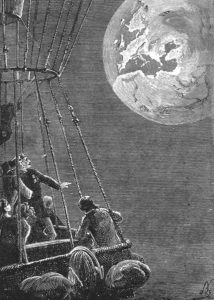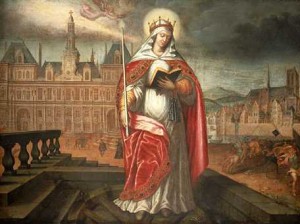Midsummer, and all here is now hustle and hubbub as we prepare for the Midsummer Makers Marketplace at the Jaffe Center for Book Arts this Saturday. We’ll be there with a dozen other local makers and small creative businesses celebrating the local, the seasonal, and the handmade. We plan to show our full selection of culinary herbs and herbal teas from the Sabbathday Lake Shakers, our own framed letterpress prints, and copies of our book Putting Up Mangoes, for we are in the thick of mango season here in Lake Worth. I think we’ll bring a basket of mangoes, too, for it is that time of year when the magical fruits begin piling up, in the sink, in bags, in every nook of the refrigerator. An embarrassment of riches. I hope you can come see us; the marketplace runs Saturday June 25 from 10 AM to 4 PM at the Jaffe Center’s satellite book arts studios on the Florida Atlantic University campus in Boca Raton at historic building T6, near the FAU Football Stadium. There will be Makers Marketplace roadsigns to guide you in. Admission is free and so is parking.
Tonight, Old Midsummer, St. John’s Eve, Seth and I will light a fire in the backyard and we’ll have some celebratory something with it, joining in the fire tradition with people all over this globe. Perhaps you can join us in your way, too. Here, for your Midsummer night’s planning, is a reprint of a Book of Days chapter on St. John’s Eve from a year or so ago. Read it again, and connect with Midsummer traditions near and far. Happy Midsomer. ~ John
St. John’s Eve, tonight, brings Midsummer. In the seasonal round of the year, we now sit directly opposite Midwinter and Christmas. The celebrations for both Midwinter and Midsummer are old celebrations, older than you or I or anyone can recall, older even than the events assigned to them by the early Church, for the Church early on recognized that honey draws more flies than vinegar, and in that spirit, old pagan celebrations continued but with new names and new focus. Hence the birth of Christ was set at the winter solstice and the birth of John the Baptist, the voice crying in the wilderness, setting the path straight for the savior, was set at the summer solstice.
St. John is unusual in that he is remembered not just on the day of his death (which is the case with all the other saints) but also on the day of his birth. And as is often the case with traditional holidays, it is the eve the night before when the real celebration occurs. My take on this is that there is a certain magic to nighttime events: perceived magic if not real, though our ancestors thought nights like Midsummer and Midwinter full of real magic and open to the realm of fairies and sprites and other folks of parallel universes. You need only look to Shakespeare’s A Midsummer Night’s Dream, set on this very night, to grasp the beliefs.
But no matter whether you give credence to these other realms or not, there is no denying the air of mystery that accompanies a celebration at night. We hang fairy lights in the trees, we light candles and beseeching fires, we walk amongst flowers that bloom only at night and spice the air we breathe. We take our celebration outdoors and the stars and moon are above us and this is infinitely more mysterious than the ceilings in our homes. This, too, is magic, as powerful as any other.
Midsummer and St. John’s Day are not much celebrated in the States, much to our loss. But in other places, this is a night to spend out in the open air. In Scandinavia, with the sun at its northernmost point in the sky, this is the time of the Midnight Sun (how magical is that?). It is a night there for bonfires and meals of pickled herring and new potatoes with sour cream. Further south in Italy bonfires are also part of the night, but the meals vary by region. In Rome, the Midsummer meal centers around snails; local belief holds that eating snails, horned as they are like devils, will protect you from Midsummer mischief. In the towns of Northern Italy, Midsummer is a time to break out balsamic vinegar, aged as long as a hundred years. Every part of the meal has some of this nectar of the gods in it, for the lore of the land says that this is the time of year when the must enters the grape on the vine, and it is the must that will eventually become both the wine and the balsamic vinegar (again, magic). The must is the juice, crucial to both, for good balsamic vinegar is made from must just as is wine. It is then aged all those years in casks of various types of woods: at least a dozen years, but, as mentioned above, sometimes a hundred years or more.
It is a night to go and gather plants for their magical properties: fern seed and St. John’s Wort. The latter will protect you from evil, the former, if gathered properly, is believed to confer the power of invisibility. But not without some peril: the seeds are fiercely guarded by the fairy folk who know more of these secrets than do we. The magical properties of plants also play into Shakespeare’s comedy. Have you ever wondered what is the “herb” (a little western flower, Before milk-white, now purple with love’s wound) that Oberon instructs Puck to fetch and squeeze the juice of onto the eyelids of Titania and then of the lovers? Well, these are the things I wonder about. Oberon goes on to tell us that maidens call it “love-in-idleness,” but in modern terms it turns out the herb is a flower known as Viola Tricolor, also known as Heartsease or Wild Pansy. You may have some blooming now in your summer garden. So much magic, so close to home. Make the most of it. Happy Midsummer.
Image: Viola Tricolor, Plate No. 227 in Bilder ur Nordens Flora by C.A.M. Lindman, published in 1905. [Public domain] via Wikimedia Commons.


